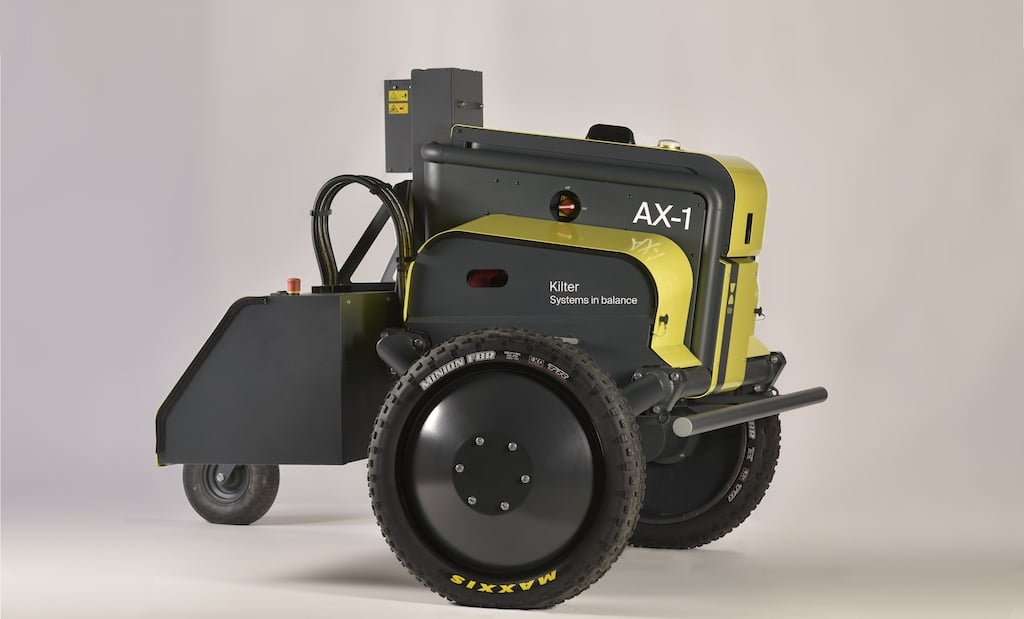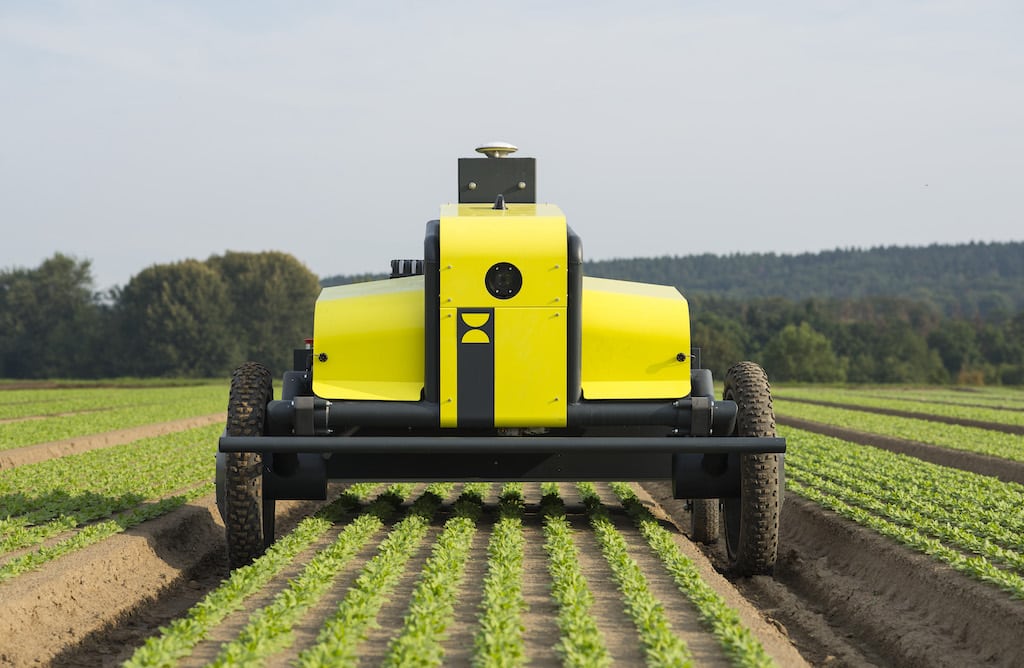The Norwegian company Kilter AS has developed an autonomous agricultural robot named AX-1 that enables farmers to reduce herbicide usage by up to 95%.
The Norwegian company Kilter AS has developed an autonomous agricultural robot named AX-1 that enables farmers to reduce herbicide usage by up to 95%. This smart agriculture system works by scanning the field with cameras attached to a robot and then classifying the plants into agricultural crops or weed with innovative machine learning algorithms. The robot then uses a grid of high speed, high precision nozzles that can spray the weeds while preventing herbicides from reaching the crop or the soil where no weed is located.
The easiest way to envision how this works is to think of the unit as a large-scale ink jet printer with multiple parallel print heads
explains Jarle Dørum, Chief Software Architect in Kilter.
Below you see the robot in action at Hasle farm here in Norway:
The spraying unit receives information about when and where to spray/print drops of herbicides based on the output of the image classification algorithm. All this works while the robot is autonomously moving over the field with high precision GPS. The precision of this novel self-developed nozzle system is up to 6mm even at higher speeds making sure only the weeds receive their share of chemicals.
This really is a breakthrough in preventing unnecessary herbicide usage. This new method of deploying herbicides is much more environmentally sustainable sparing both the flora, fauna, and water ecosystem from excessive herbicide usage. At the same time, the farmers can achieve a high crop production output, save money on herbicides as well as on manual labor. The final consumer can consume a crop that has not had any direct contact with herbicides.

One other interesting aspect of the Kilter smart agriculture robot is its focus on weight. In contrast to a tractor-based system this robot only weighs around 300kg including the herbicide load. This reduces the compression of the soil, helping to foster better growth conditions as well as making the robot more mobile. There are now multiple units deployed in Germany and Norway with many other countries to follow.

This leads to another major challenge for this project: How can you manage and maintain a fleet of robots that are deployed globally while still doing major development and improvement work from Norway?
Kilter had to find a solution that was able to address the following key challenges:
This is where the qbee embedded Linux device management software and remote VPN solution comes in. Kilter identified qbee.io to address all the issues listed above making it the ideal robot management solution. The VPN that is included allows both remote SSH access through the web UI as well as through a developer laptop with the local terminal. This is handled by the qbee-connect desktop application which is available for all major OS. The VPN and tunneling capabilities are included in the qbee agent and it is even possible to access the edge web application remotely. All this helps to avoid the hassle of setting up and operating VPN infrastructure.
We are operating our devices through mobile networks with changing IP addresses. In addition, handling VPN certificates and maintaining the VPN network infrastructure is not something that we are interested in. Our core competence is the overall robot design and the advanced machine learning algorithms. We work on continuous product improvements and deploy new software frequently. The device management is a service function for us. With qbee we can focus on our value adding functionality while having a powerful device management and automation software to build upon.
Jarle Dørum
Whenever an updated version of the robot software is done it can be deployed with over-the-air updates to a specific group or all robots anywhere in the world. The same is true for security critical OS updates. Since qbee is a pull-based automation system defining state rather than pushing out commands the robots will receive the latest update and configuration even after extended periods of inactivity and converge to the current state. An agriculture robot is powered off most of the time but needs to be operational immediately when weather and plant conditions allow the treatment.
File distribution can run remote scripts to scrape logs, or these can be investigated on the device through file browsers. Remote SSH access opens for full debugging capabilities. In addition, the qbee agent also collects a large number of telemetry information such as CPU load, memory, or disk status. This helps to proactively identify potential problems such as memory leaks in applications or log file creeping.

During the development phase both x86 and ARM based architectures running Linux were used. Since qbee supports Linux on all platforms it was no problem to switch between these hardware architectures as development proceeded.
This project is a nice example of how innovative technology in smart agriculture can help to improve food production as well as food safety, reduce harmful chemical usage and at the same time give an economic incentive to do so. In order to achieve a high level of innovation small companies need to focus on their niche competence. Kilter Systems, which is a spin-off of Adigo, is world leading in robotics, industrial design, and machine learning algorithms. They have spent countless hours of hard work to optimize the Kilter robot to its current level of performance. Being able to rely on the device management and remote access platform qbee.io really helped to keep the focus on the value adding engineering tasks for the robot rather than developing and maintaining the device management solution.



